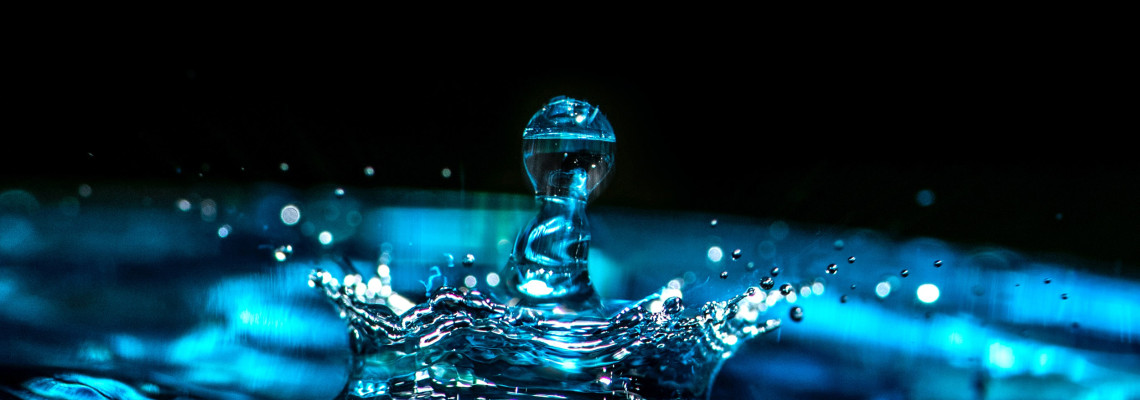Pascali Pumps - Ensuring you choose the right pump | Product Education | AgBlogs

Ensure you choose the right type of Pump.
Your shower is weak, your water pump packed up and left you,
and the garden needs water. Solutions to all your water problems are a click
away, but how do you decide which water pump to buy?
Let’s start by looking at the kinds of pumps Pascali offers.
Since 2013, Pascali has been helping homeowners across South
Africa enjoy their homes more, by providing effective water pressure solutions.
From increasing water pressure and flow in taps and showers to feeding
irrigation systems with ideally pressured water from a rainwater harvesting
tank, Pascali is the pump that gets it done.
Centrifugal pump:
These are the most common type of water pumps used in
agricultural, industrial and domestic applications. They work by converting
rotational energy from an electric motor into kinetic energy that’s used to
move water through a series of blades called impellers. Centrifugal pumps are
best suited for pumping large volumes of water at low to medium pressures. It
is ideal for applications such as irrigation, water transfer and water
circulation in cooling systems.
Jet Pumps:
These pumps are a type of centrifugal pump that is designed
for use in shallow wells. They work by creating a vacuum that pulls water or
liquid up from the well and into the pump. Jet pumps are ideal for use in
applications where the water source is relatively shallow and the water needs
to be pumped to a higher elevation.
Peripheral Pumps:
Peripheral pumps, also known as side channel pumps or
booster pumps, work similarly to centrifugal pumps, but the impeller is shaped
differently and interacts with the water differently. Instead of n impeller,
the peripheral pump has a solid wheel almost like a grinder disc cutting
through a material.
As the disc rotates it creates a high-speed flow of liquid
along the outer edge. The liquid enters a series of channels or chambers that
are located in the stationary casing surrounding the disc. The high-speed flow
of liquid in the side channels creates a pressure difference across the
channels. This pressure difference causes the liquid to be forced out of the
channels and into the discharge outlet of the pump. As the liquid is forced out
of the side channels, it creates a low-pressure area on the other side of the
impeller which draws in more liquid from the inlet. The peripheral pump is
capable of generating high pressures with relatively low flow rates. This
makes it useful for applications such as boosting water pressure in small
domestic systems.
Submersible Pumps:
They work by converting rotational energy from an electric
motor into kinetic energy that’s used to move water through a series of
impellers. Submersible pumps are designed to be fully submerged in water and
are ideal for pumping water from wells, boreholes and other underground
sources.
So, you have narrowed it down to what kind of pump you need
to buy, but what are the other factors that you need to consider? Well, some key
things to consider before purchasing a pump are:
1. Distance from the water source – The distance
from the source to the pump will affect the pump’s flow rate and pressure. The
longer the distance, the greater the drop in pressure and flow rate.
2. Flow rate and pressure requirements – The flow
rate and pressure requirements of your system will also determine the type of
pump you need.
3. Will the pump be damaged if the water flow runs
dry?
Flow rate
The average flow rate of a normal domestic residence in South Africa can vary, depending on factors such as the number of occupants, the size of the house and the type of water fixtures installed. However, the typical flow rate for a South African residence is around 10 – 15 liters per minute (LPM) for a single fixture such as a shower head or tap and the total flow rate for the entire residence can range from 20 – 40 LPM or more.
When calculating the flow rate, you want you can take the
above flow rates as an average to work on. If your flow rate is too low, you
can look at obtaining a bigger pump and also look at the installation of the
system.
To determine the size of the pump you will need based on the
distance the water needs to be pumped you will need to consider several factors
such as the flow rate required, the height the water needs to be pumped to and
the friction loss in the pipes.
The formula used to determine the pump size is known as the
pump affinity law, which is based on the principle that the flow rate, pumping
height and power consumption of a pump is proportional to the speed of the
pump. Here is the formula:
Q1/Q2 + N1/N2, where:
Q1 is the flow rate of the existing pump
Q2 is the desired flow rate
N1 is the speed of the existing pump
N2 is the speed of the new pump
Head height
To calculate the head or height the water needs to be pumped
to, you can use the following formula:
H=(p1-P2)/( ρg) +Z1-Z2, where:
H is the head
P1 is the pressure at the pump inlet
P2 is the pressure at the pump outlet
ρ is the density of the fluid being pumped
g is the acceleration due to gravity
Z1 is the elevation of the pump inlet
Z2 is the elevation of the pump outlet
Note:
The rate of acceleration of water due to gravity is 9.81
meters per second squared at sea level.
The density of water at standard temperature and pressure is
approximately 1 gram per cubic centimeter or 1000 kilograms per cubic meter. It
is worth noting that the density of water can vary slightly depending on
factors such as temperature and pressure. At higher temperatures, the density
of water decreases, while at higher pressures, the density of water increases.
Friction loss
To calculate the friction loss you can use the following
formula:
Hf= (fL/D) x (V^2/2g) where:
Hf is the friction loss
F is the friction factor of the pipe
L is the length of the pipe
D is the diameter of the pipe
V is the velocity of the water in the pipe
G is the acceleration due to gravity
Note:
Approximate friction factors for different pipe types:
Polypropylene pipes – 0.001 roughness factor
Copper pipes – 0.00015 roughness factor
Black Irrigation Pipes – 0.02 to 0.03 roughness factor
PVC pipes – 0.0015 roughness factor
The friction factor is an important parameter in fluid mechanics
and is used to calculate the pressure drop or head loss in a pipe due to
friction. The pressure drop or head loss is directly proportional to the
friction factor, the length of the pipe and the velocity of the fluid and is
inversely proportional to the diameter of the pipe. A higher friction factor
indicates a greater resistance to flow and therefore a higher pressure drop or
head loss.
Once you have the flow rate, the head and the friction loss, you
can select a pump that meets those requirements. It is important to note that
it is always best to consult with a professional to determine the correct
system design for your specific needs. This article is just a general guideline
to help guide you in what you need to look for excellent flow rate and
water pressure.
Here are our most popular Pascali Pumps:
1. PASCALI PUMP PERIPHERAL + 24L TANK
2. PASCALI PUMP SELF PRIMING JET + 24L TANK
3. PASCALI CENTRIFUGAL PUMP 0.75KW + DSK2 CONTR 230V
Visit AgMarket Today to see the rest of our range of PascaliPumps.

